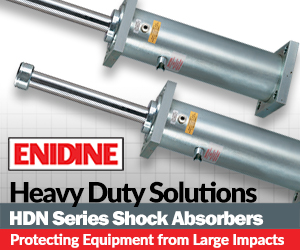Understanding casing distortion
One of the most critical issues affecting rotating machines is casing distortion. This article delves into what casing distortion means, how it impacts machine performance, and why it is essential to address it in order to achieve reliable operation.
Casing distortion is not only one of the biggest problems for rotating machinery, but is also a very common one. But what does it actually mean? To explain it, we can use the famous analogy of a rocking table in the restaurant. This is a situation everybody can relate to. Due to an uneven floor or bad construction of the table, there is space under one leg which makes the whole table rock from one side to another. It is a problem that is easy to solve, just use a few napkins and the table will stay still.
The same happens when placing rotating machinery on a foundation that is not flat. Most rotating equipment is designed to be installed on a flat surface. At the manufacturer site, all machine feet are milled to be in a perfectly flat plane. When placing the equipment on a non-flat foundation or uneven sole plates, it will reproduce that rocking situation we just mentioned. That is what we call “soft foot”.
Tiny clearances, big impact
Rotating equipment consists of many parts: rotors, shafts, bearings, mechanical seals, impellers in compression chambers, just to mention a few. And these all have very small internal clearances. If a machine is bolted down on an uneven surface, the forces applied on the machine feet will change the casing geometry. As a result, these clearances will quickly change.
To fix a soft foot condition, is necessary to compensate everything above 0.05 mm. That is not much, if you consider the fact that the thickness of a human hair is between 0.06 mm to 0.08 mm! This is how little it takes to convert our new or newly overhauled machine into a victim of casing distortion.
Pipe connection issues
Another possible cause for casing distortion is pipe strain. Pipe strain can occur when the pipes are wrongly fabricated, and the connection flanges are not aligned. It can also be that the pipe supports are too high or too low, which creates large gaps between the connections. A common solution for this is to force them together, which will result in what we call nozzle load. This too will put a lot of stress on the machine casing. (The OEM will specify the allowed nozzle load on the equipment.)
The long-term consequences
So what kinds of problems can you run into if casing distortion occurs? Previously we mentioned the internal parts of rotating machinery, such as shafts. How do they get affected?
Well, shafts have mounted bearings to carry the rotating motion, and these bearings operate under designed loads. When casing distortion occurs, the shafts are put under strain and their positions change. That will affect the bearings by changing their designed load, and the rolling elements inside the bearing will move from designated race way. This is something that will seriously affect lubrication. The rolling elements of the bearing will push away the lubrication since there will be no space for it.
Heat will build up and produce more thermal expansion of internal components, which will gradually reduce their gap until, inevitably, failure occurs. (Changing the designed loads in the bearings will reduce bearing life by as much as 50%.)
Ensuring proper installation can make the difference between smooth operation and unexpected failure. As we have seen, all it takes is a minor gap to throw your machinery off balance. When it comes to rotating equipment, precision is a necessity.
Text: Roman Megela, Senior Reliability Engineer, Easy-Laser AB
Images: Easy-Laser AB











